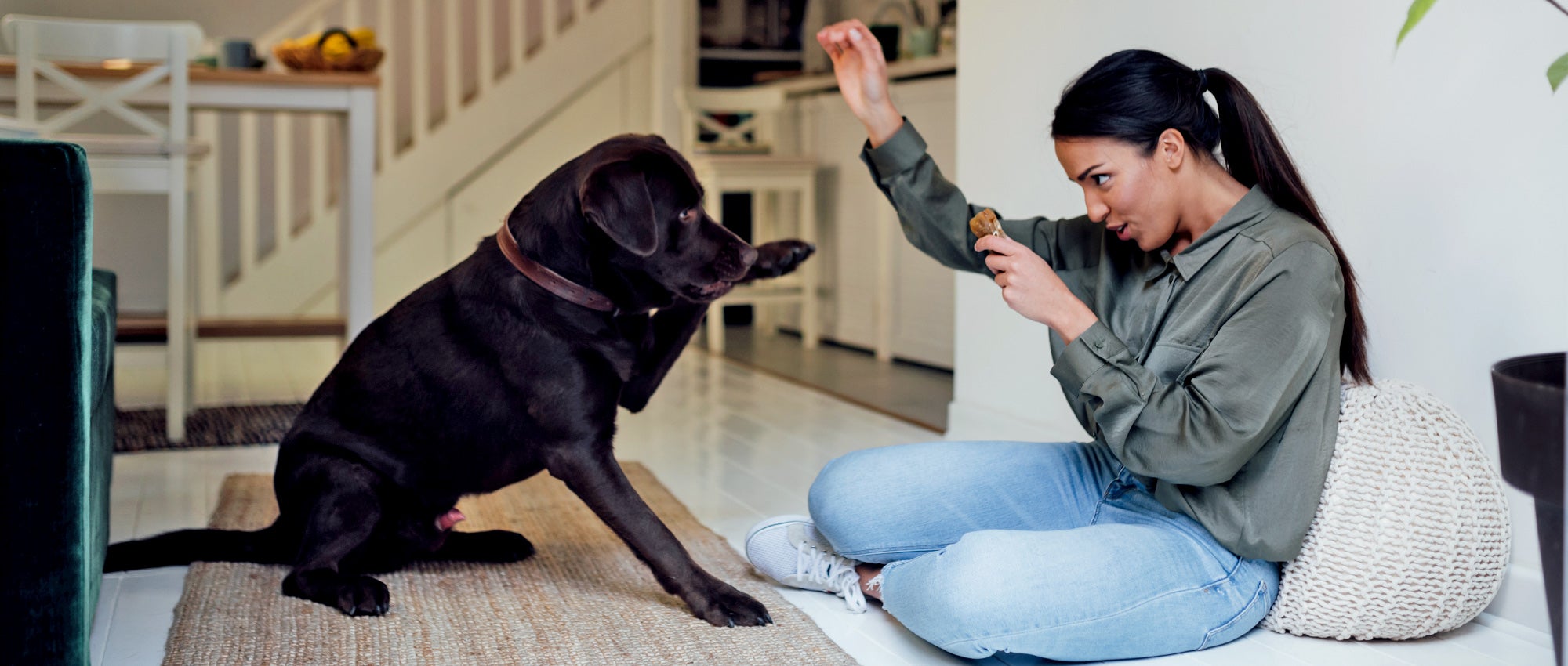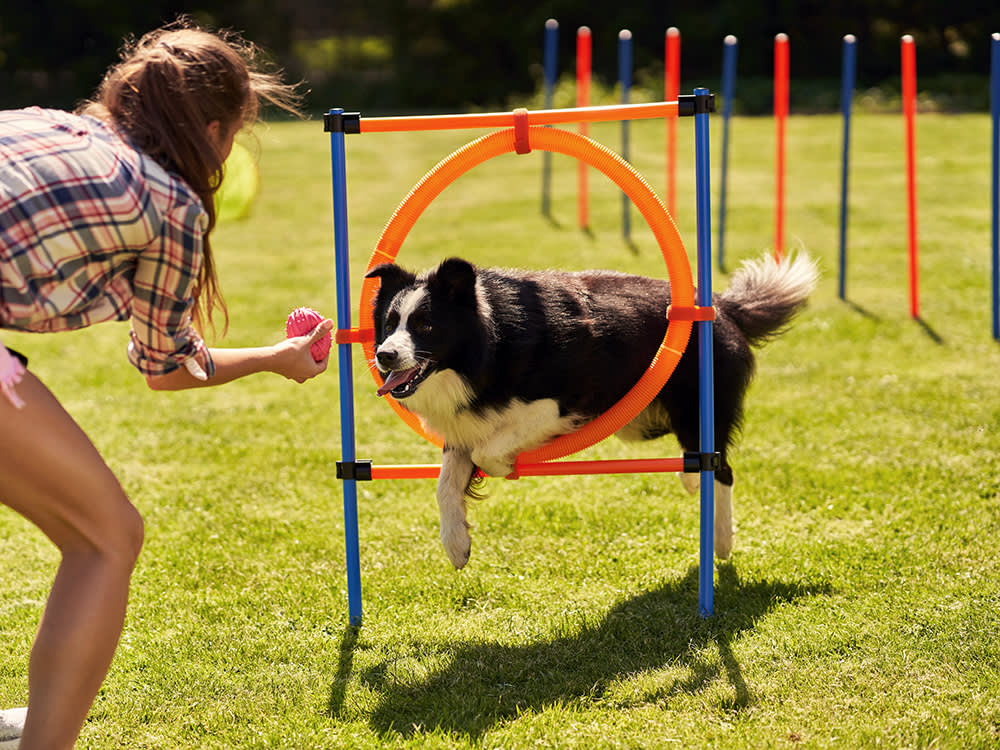Exactly how to Select the Right Method for Successful Dog Training
Exactly how to Select the Right Method for Successful Dog Training
Blog Article
Important Tips for Successful Dog Training: A Guide for Family Pet Owners
Effective pet training is a diverse process that requires a calculated technique tailored to both the pet dog's temperament and the owner's goals. Secret components such as developing constant commands, employing favorable support, and promoting early socialization play vital duties in cultivating a well-adjusted canine friend. Many family pet proprietors run into obstacles that can impede development, leading to frustration and unpredictability. Comprehending how to browse these obstacles can significantly improve the training experience, eventually transforming the partnership in between proprietor and pet dog. What are the vital approaches that can be employed to ensure success in this endeavor?
Comprehending Canine Behavior
Comprehending canine habits is vital for effective training and cultivating an unified connection in between pooches and their owners. Pets connect primarily via body movement, vocalizations, and activities, making it vital for owners to interpret these signals precisely. Acknowledging a canine's pose, tail setting, and ear alignment can provide understandings into its mood. A wagging tail does not always show happiness; it can likewise signal enjoyment or stress and anxiety.

Socializing plays a significant role in pet behavior; exposure to different settings, people, and other pets can dramatically affect a pet's character. Aspects such as breed characteristics and private temperament need to lead training methods, as some types may have specific behavioral traits that require tailored techniques. By understanding these elements, owners can develop an encouraging setting that encourages positive actions, leading to successful training results and a much deeper bond with their pet dogs.
Developing Regular Commands
Reliable interaction with your canine begins with developing constant commands. This fundamental element of training is crucial for cultivating understanding in between you and your pet. Uniformity in the commands you utilize guarantees that your pet can dependably connect certain words or expressions with the preferred habits.
When selecting commands, pick clear, distinct words that are very easy to separate and state from one another. Avoid making use of similar-sounding commands that may puzzle your dog. Utilizing "sit" and "remain" is ideal, yet "sit" and "hit" could lead to misconceptions.
Additionally, keep the exact same tone and quantity for each and every command. Pets are delicate to vocal signs, so differing your tone can create confusion.
It is just as crucial to ensure that all household members get on the very same page pertaining to the commands utilized. A united front in command use will prevent mixed signals and reinforce the learning process.
Favorable Reinforcement Methods
The power of favorable reinforcement in dog training lies in its ability to encourage preferred actions via incentives and praise. This strategy is grounded in the concept that behaviors complied with by positive results are more probable to be duplicated. By including favorable reinforcement right into your training program, you can successfully form your dog's habits in a positive way.
To implement favorable support, it's necessary to identify what inspires your pet, whether it be deals with, playthings, or spoken appreciation. When your dog carries out a wanted action, such as remaining on command, right away reward them with a reward or affection. This organization between the command and the favorable end result enhances their understanding.
It's critical to timing the incentives correctly; providing the support within secs of the desired actions helps your canine make the connection (dog training). Furthermore, uniformity is essential-- ensure that all relative utilize the very same commands and look at this site incentive systems to prevent confusion

Slowly, you can reduce the regularity of deals with as your pet discovers the behavior, transitioning to applaud or intermittent incentives. This technique not just cultivates a solid bond between you and your canine yet additionally advertises a favorable learning setting, making training a pleasurable experience for both.
Socialization and Communication
Regularly revealing your dog to a selection of environments, people, and various other pets is essential for their social development. Socialization needs to start early, ideally during the critical home window of 3 to 14 weeks, when puppies are most receptive to brand-new experiences. Older canines can also benefit from recurring socialization efforts.
Introduce your pet to various settings, such as parks, pet-friendly stores, and metropolitan areas. This exposure aids them adapt to numerous stimulations, minimizing anxiety and anxiety reactions. Motivate favorable interactions with other pets and individuals, guaranteeing that these encounters are regulated and secure to promote self-confidence.
Use structured playdates with well-mannered canines, as this can enhance your pet dog's social abilities and instruct them suitable habits. Obedience courses and training sessions also offer exceptional opportunities for socialization, permitting your dog to communicate with others in a monitored setting.
Screen your dog's body movement throughout interactions, as this will certainly help you determine their convenience degree. Slowly enhance direct exposure to even more difficult situations while making certain that each experience is positive. A well-socialized dog is more most likely to exhibit balanced behavior, making them a delight to have in any kind of setup.
Resolving Usual Training Obstacles
Every canine proprietor will encounter training challenges at some time, regardless of their pet's age or socialization level. Identifying typical problems such as stubbornness, diversions, and terror can aid in establishing reliable strategies for improvement.

Progressively introduce interruptions as the canine ends up being more skillful look here in commands. Short, frequent training sessions are likewise effective in preserving attention.
Terror can hinder a canine's learning procedure. Steady desensitization to the source of anxiety, coupled with favorable support, can assist relieve anxiety. Persistence is vital; never ever require a canine right into a circumstance that creates distress, as this may worsen the issue.
Inevitably, understanding and attending to these typical obstacles with an organized technique will cultivate a more effective training experience, strengthening the bond between dog and owner while advertising reliable knowing.
Final Thought
In summary, effective canine training depends on a detailed understanding of canine behavior, the facility of regular commands, and the application of favorable reinforcement techniques. Socializing plays an essential function in creating well-adjusted animals, while addressing common training obstacles calls for patience and versatility. By carrying out these vital strategies, animal owners can foster a solid bond with their pet dogs and advertise preferable actions, eventually leading to a harmonious relationship between human beings and their canine friends.
Recognizing pet dog behavior is essential for reliable training and promoting an unified partnership between pooches and their proprietors.Socializing plays a significant duty in dog behavior; exposure to numerous environments, people, and other animals can considerably influence a pet's temperament.The power of positive reinforcement in canine training lies in its capability to encourage desired actions with rewards and appreciation. By including favorable support right into your training regimen, you can efficiently shape your canine's behavior in a constructive fashion.
In summary, successful canine training relies on a comprehensive understanding of canine actions, the establishment of consistent commands, and the application of positive support strategies.
Report this page